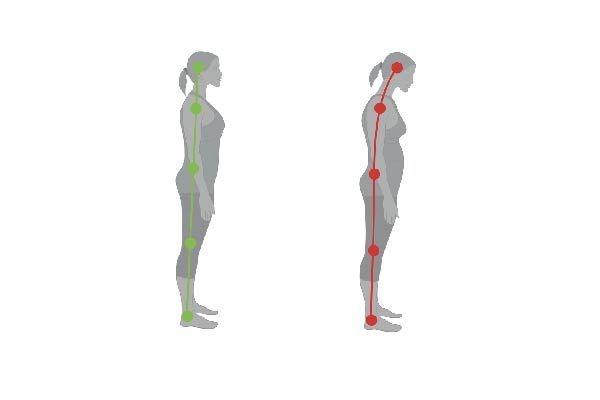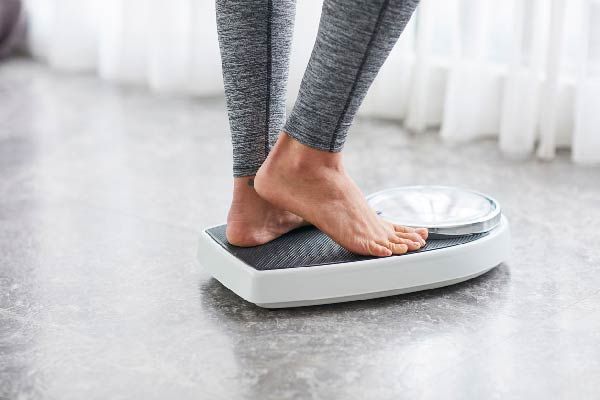
The skeletal system is the most important structure of the human body. The proper stance of the skeletal system is called posture. As a medical term, posture means stance.
Posture is the structural framework of your body. A proper posture is an indicator of a healthy body. On the contrary, a faulty posture may be a symptom or cause of several physical and neurological disorders. In fact, we often experience this issue about posture and our health status in daily life. Many of us experienced a pain in the leg muscles or in the lumbar region due to the shoes used. Or, we felt an uncomfortable tension in the neck and shoulder area when we are stressed. In this article, we want to give you some informative examples on this subject, as well as, share some academic studies that reveal that postural disorders can lead to more serious health problems.
1) Posture Disorders in School Age Children
The authors of this study revealed that more than 50% of school-aged children had symptoms of postural disorder. They concluded that postural disorders were due to several causes, such as bone and muscular lesions, central nervous system (CNS) dysfunction, inappropriate environment, and lack of physical activity. They also reported that postural disorder symptoms were most common in the upper trunk, shoulder, and neck muscles.
This study reveals that school-age children need proper posture and movement training to prevent postural disorders. The implementation of proper posture and movement programs in schools has been identified as a useful public health initiative.
Radzevičienė, L & Kazlauskas, A. (2016) Posture Disorders and their Causes in Rural School Pupils. Social Welfare Interdisciplinary Approach, 6(1) p. 118-125.
2) An Active Life and a Upright Posture Affects Cognitive Functions Positively
This study reveals that an upright posture and an active life are associated with different cognitive functions and that adults show better memory performance when they have proper posture. This significant study proves that there is a link between postural alignment and cognitive functionality in healthy older adults.
Muscle strengthening exercise, an elderly patient and a physiotherapists
In this study, the authors define the terms of “Mobility” and “Posture” and reveal how the decrease in mobility and posture disorder affect the elderly adults. The study reveals that elderly adults tend to hold their heads and necks forward from their bodies and this directly leads to a decrease in cognitive functions.
Cohen, R. et al. (2016) Mobility and Upright Posture Are Associated with Different Aspects of Cognition in Older Adults. Frontiers in Aging Neuroscience 8(257).
3) The Relationship Between the Posture and the Emotions
This study reveals that the posture can affect the emotional state of the individual and vice-versa. The study reveals that the emotions of happiness, success, trust, and optimism have a significant and direct correlation with the person’s posture.
In this study, the authors revealed that postural disorders such as protrusion of the head, shoulder elevation, and hyperextension of the knees were observed in the individuals when they were angry. It is emphasized that angry individuals also tend to have shoulder protraction.
Rosário, J. L., Diógenes, M. S. B., Mattei, R., & Leite, J. R. (2016). Angry posture. Journal of Bodywork and Movement Therapies.
5) Effects of a bad posture on vital Respiratory Function
The results of this study suggest that forward head posture may reduce respiratory capacity, possibly due to weakness or disharmony of the accessory respiratory muscles.
Respiration is an activity affected by complex biomechanical factors; therefore, the postural stability of the cervical and thoracic spine regions is of great importance for the smooth functioning of respiratory functions. The forward head posture causes shortening and weakening of some respiratory muscles in the long run. Moreover, it increases the muscle tension around the thoracic spine, thus, restricting the range of motion in the upper thoracic spine.
Han, J. et al. (2016) Effects of forward head posture on forced vital capacity and respiratory muscles activity. Journal of Physical Therapy Science, 28(1) p. 128–131.
6) Need for Postural Training Programs in Physical Education Classes
In this study, school-age children attended a physical education course where they performed posture exercises twice a week.
The researchers found that the children showed a better posture after the application of postural correction exercise intervention. It has been stated that applying posture exercises in more schools is a smart and effective strategy for the prevention of early-onset postural impairment symptoms.
Ruivo, R. et al. (2016) The effects of training and detraining after an 8 month resistance and stretching training program on forward head and protracted shoulder postures in adolescents: Randomised controlled study. Manual Therapy, 21 p. 76-82.
7) Strengthening and Stretching Exercises for Improving Forward Head Posture
This study reveals the importance of performing posture rehabilitation in patients with forward head posture. In this study, both stretching and strengthening exercises were shown to be effective in reducing the forward head posture.
The researchers also emphasized that the postural balance of the “strengthening” group was increased. It has been stated that postural exercises that focus on strengthening the weak muscle structure are beneficial for structural correction and improvement of dynamic balance ability.
Lee, S. & Lee, J. (2016) Effects of strengthening and stretching exercises on the forward head posture. Journal of International Academy of Physical Therapy Research, 7(2) p.1046-1050.
 Although the formulas for determining your ideal fat ratio are still controversial in the medical and fitness world, we share the two most commonly used measurement parameters below to get an average figure:
Although the formulas for determining your ideal fat ratio are still controversial in the medical and fitness world, we share the two most commonly used measurement parameters below to get an average figure:



